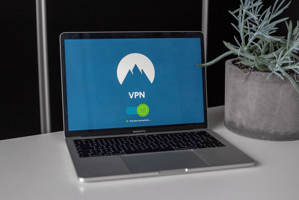If your cybersecurity program has not been evaluated in the last year, your organization may be...
Deploy These Data Protection Techniques to Prevent Breaches

The number of network breaches continues to rise, tasking business leaders with onboarding the best available data protection tools and techniques.
Hackers negatively impacted upwards of 422 million people in 2022, an increase of 128 from 2021. With the dark web activity up by a reported 300 percent since 2017, cybercriminals are making banks sell sensitive and valuable digital information. That's also why thorough cybersecurity monitoring includes the dark web.
Financial losses aside, another reason to integrate the most determined data protection techniques involves reputation. When an organization fails to protect the information of employees, clients, and vendors, people in its orbit lose trust and usually stop doing business with the outfit. If you are not 100 percent confident in your cybersecurity posture, consider having a risk assessment performed. The experts who perform the risk assessment provide a report that serves as a cybersecurity checklist. With this information in hand, you’ll be in a better position to decide which data protection tools and techniques best suit your operation.
Essential Data Protection Techniques to Prevent Breaches
Preventing digital asset theft ranks among the growing concerns of business owners, CEOs, and everyday people. The number of data breaches rises just about every year, while physical burglaries decline. For example, home break-ins dropped from 728 per 100,000 people in 2000 to about 271 in 2021. Cyber-burglaries, by contrast, continue to set records annually. Stopping hackers from pilfering off your organization’s digital information calls for determined data protection tools and techniques such as the following.
Encryption
This technique transforms information into an unreadable format during electronic transmission. In the event a hacker is silently monitoring messages for clues to further penetrate the network, emails, text messages, and other files are rendered useless. Adding encryption technologies helps ensure that information from endpoint devices enjoys the protection needed to keep data safe and confidential.
Data Loss Prevention
Sometimes referred to as “DLP” by cybersecurity and managed IT professionals, this technique typically brings together a variety of elements to prevent unauthorized users from accessing confidential information. Things like content analysis, monitoring user behavior, and policy enforcement go into detecting and deterring breaches that otherwise result in losses.
Intrusion Detection and Prevention
Ongoing monitoring remains an effective way to meet threat actors and expel them in real-time. By using tools such as AI and machine learning, anomalies trigger alerts that are sent to your cybersecurity team. Given the fact that a hacker could be halfway around the world, pounding at a laptop in another time zone, many organizations have opted for remote cybersecurity monitoring. This opens the door for cybersecurity experts to handle emerging threats 24 hours a day, 7 days a week.
Access Controls
Deploying the proper controls and user policies can hamstring hackers from gaining access to your network and its critical data. There are two commonly used data protection techniques that provide enhanced security for businesses. These involve multi-factor authentication and zero-trust architecture.
- Multi-factor authentication has emerged as a simple, cost-effective solution for businesses of all types and sizes. Legitimate users are required to enter a code sent to a secondary device or source. If a hacker manages to learn someone’s username and password, the thief would also need to possess their cell phone or have access to personal email. That’s a bridge too far for even the more skilled hackers.
- Zero-trust architecture also delivers a commonsensical approach to data protection. Each user profile is automatically created with network restrictions. Employees and stakeholders have unfettered access to the information and programs they need to perform routine tasks. However, they require permission to view sensitive information outside their job description. Should a cybercriminal learn someone's username and password, those same zero-trust restrictions inhibit their unethical behavior.
Although the overwhelming majority of data breaches are the result of human error, your employees can be turned into a front line of defense. By providing staff members, across departments, with the educational tools and training needed to recognize cyber threats, they are unlikely to be easily tricked by phishing emails or social engineering schemes. Proactive business leaders who empower their workforce with the skills and tools to prevent data breaches create a powerful security culture.
What a Cybersecurity Consultant Can Do for Your IT Security
At CyberTeam, our managed IT and cybersecurity consulting experts have the experience and technology to protect your company from a data breach. We start by conducting a risk assessment to gain a clear understanding of your system’s strengths and vulnerabilities. Schedule a risk assessment with us and begin the process of improving your defenses.





